What is Prime Number?
Any Natural number greater than 1, which is divisible by 1 and only by itself is called Prime Number.
2, 3, 5, 7, 11 etc.
Arrangement of prime numbers
Prime numbers can be arranged in a line form like shown as below in the diagram.

What is composite number?
Any Natural number, which is greater than 1 and is not a Prime Number is called a Composite Number.
4, 6, 8, 9, 10 etc.
1 is neither a Prime Number nor Composite Number.
Every number in maths can either be a prime or a composite number except 0 and 1 because 0 and 1 are neither a prime number nor a composite number.
Arrangement of composite numbers
Composite numbers can be arranged in a rectangular or square form like shown as below in the diagram.

How to find prime numbers?
Many mathematicians have worked on primality tests to test whether a number is prime. However, the oldest study of prime numbers was conducted by ancient Greek mathematicians. One of such famous demonstrations were given by Euclid in his book Euclid’s Elements, which discusses about the infinite many primes.
Fibonacci, who was an italian mathematician was the first to describe trial division for primarily test. But the greek mathematician Eratosthenes found a simple method to find prime numbers. This algorithm is known as sieve of Eratosthenes to find prime numbers upto a given limit.
Sieve of Eratosthenes
In Sieve of Eratosthenes method, each number is tested for its primality, by processing each number one by one.
Let’s understand how this algorithm works by finding the prime numbers between 1 and 100.
Step 1: Cross out 1 as it is neither a prime not a composite.
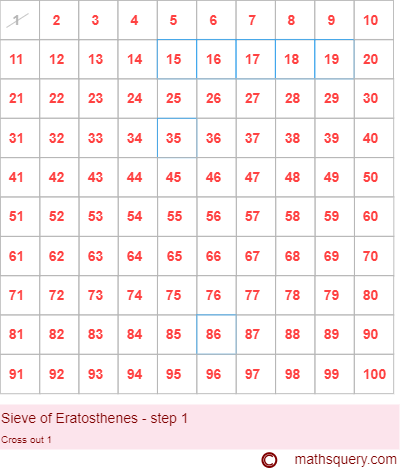
Step 2: Encircle 2 and cross out all multiples of 2.
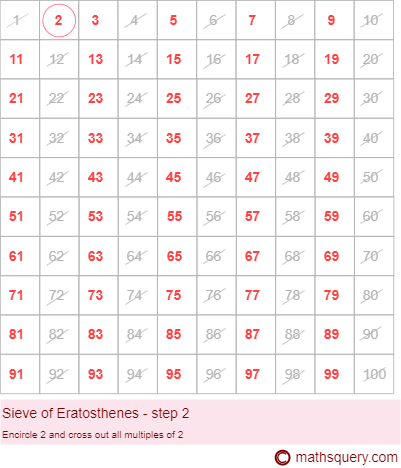
Step 3: Encircle 3 and cross out all multiples of 3, leaving out the one which have been already crossed out.
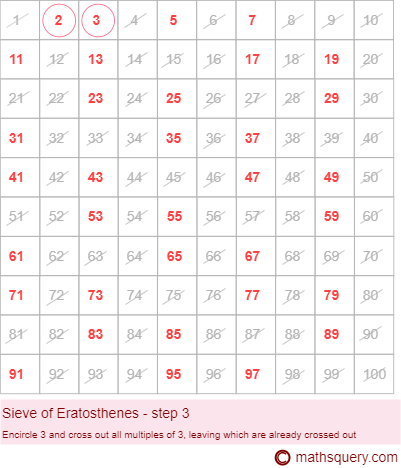
Step 4: Encircle 5 and cross out all multiples of 5, again do not cross out which have already been crossed.
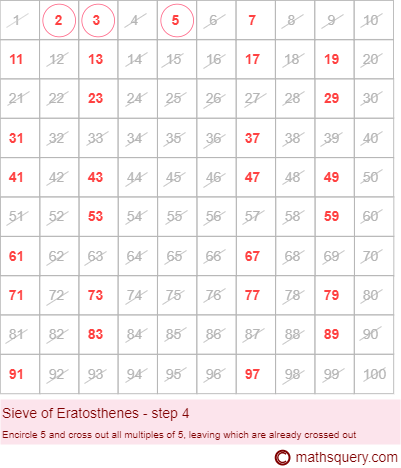
Step 5: Encircle 7 and cross out all multiples of 7 and do not cross out again, which are already crossed.
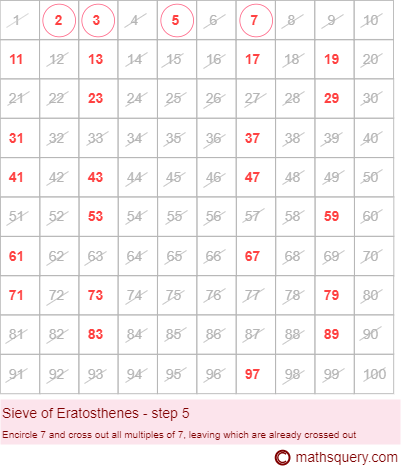
So, there are 25 prime numbers between1 and 100.
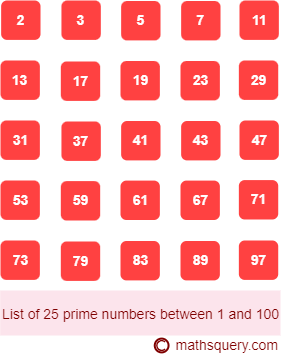
- A prime number has exactly two divisors.
- 2 is the smallest prime number.
- 2 is also the smallest even prime number.
- All prime numbers except 2 are odd.
- 3 is the smallest odd prime number.
- 4 is the smallest composite prime number.
- 2 and 3 are the only consecutive prime numbers.
- The set of prime numbers is denoted by P.
What are coprimes?
Two numbers are called to be coprime or co-prime if they have only 1 as a common factor.
In other way, we can say if greatest common divisor of two numbers is 1, then the two numbers are coprimes.
(2,3), (14,15), (8,13) etc.
What is twin prime?
Two numbers are called Twin Prime if they differ by 2 only or we can say that there is only one composite number between them. One prime number can be 2 more or 2 less than another prime number.
(3, 5), (29, 31), (71, 73) etc.
List of twin prime numbers between 1 and 100 are:
- (3, 5)
- (5, 3)
- (11, 13)
- (17, 19)
- (29, 31)
- (41, 43)
- (59, 61)
- (71, 73)
5 is the only prime number that belongs to two pairs (3, 5) and (5, 3).
What are prime triplets?
A set of three consecutive Prime Numbers if the smallest and the largest differ by 6 and must be in the form of (p, p + 2, p + 6) is called a Prime Triplet.
(5,7,11)
Why?
Because, 5, 7 and 11 is in the form of p, p + 2, p + 6
where p = 5
p + 2 = 5 + 2 = 7
and p + 6 = 5 + 6 = 11

























